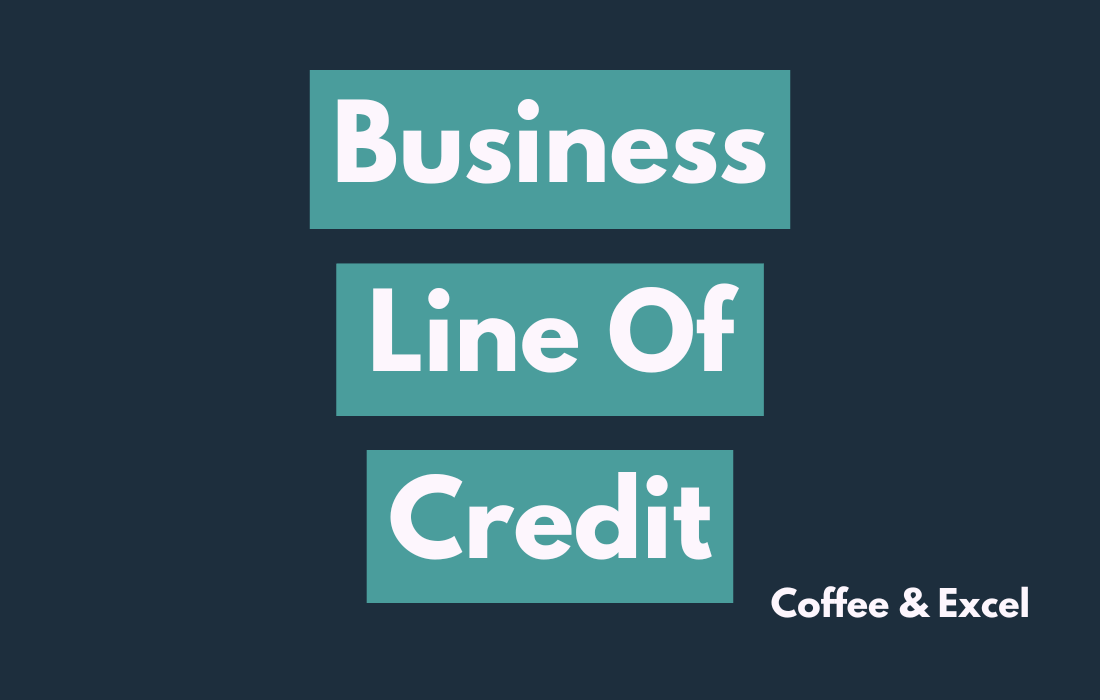Business Line of Credit: Taking Control of Your Finances

Understanding Business Lines of Credit
Navigating the financial aspects of running a small business can be complex, but understanding the tools available for managing finances can make a significant difference. A business line of credit is one such tool that offers flexibility and can be a lifeline for many businesses.
What Is a Business Line of Credit?
A business line of credit is a flexible financing option that gives businesses access to a predetermined amount of funds, which can be used as needed. According to LendingTree, it functions similarly to a credit card but typically offers higher credit limits and lower interest rates, making it a more suitable option for business financing.
This type of credit can be used for various business needs, such as managing cash flow, purchasing inventory, or covering unexpected expenses, offering a safety net that businesses can rely on (Forbes). Unlike traditional loans, where interest is charged on the total loan amount, with a business line of credit, interest is only accrued on the funds actually drawn (Old National Bank).
Additionally, as funds are repaid, the amount of available credit is replenished, providing a revolving source of funding that can be tapped into repeatedly as long as the account remains in good standing.
Qualifying for a Line of Credit
To qualify for a business line of credit, lenders typically examine several factors, including the financial history, creditworthiness, and revenue of the business. The process often involves a thorough review of the business’s financial statements, credit scores, and other relevant documents.
Qualifying criteria may include, but are not limited to:
- Minimum business age (usually at least one year)
- Proof of consistent revenue
- A good business credit score
- Collateral (for secured lines of credit)
- Personal guarantee (in some cases)
Additionally, lenders might look at the business’s market potential, industry, and the owner’s personal financial history. The requirements can vary significantly among lenders, so it is essential for business owners to research and compare different lender options and offerings to find the best fit for their financial needs.
It is important for businesses to maintain a good credit standing and to regularly monitor and review their financial health in order to increase the likelihood of being approved for a business line of credit.
Understanding the nuances of a business line of credit can empower business owners to make informed decisions and take control of their financial future. Whether it’s to bridge gaps in cash flow with bridge loans or prepare for upcoming growth opportunities, a business line of credit can be an indispensable component of a small business’s financial toolkit.
The Benefits of Flexibility
The business line of credit is a favored tool for many business owners due to its inherent flexibility, which can provide a safety net for financial management and unforeseen expenditures.
Managing Cash Flow
One of the primary advantages of a business line of credit is managing cash flow effectively. Since businesses often experience fluctuations in income and expenditures, having access to a line of credit can help smooth out the ups and downs. For instance, during a slow season, a business might draw on its line of credit to ensure that it can still cover payroll, rent, and other operating expenses. Conversely, during a period of strong sales, the business can pay down the borrowed amount, reducing interest costs.
A business line of credit offers the flexibility to borrow funds up to a certain limit, paying interest only on the amount actually used rather than the entire credit limit. This can lead to significant savings and more strategic financial management (Old National Bank).
| Financial Scenario | Action with Line of Credit |
|---|---|
| Seasonal Cash Flow Dip | Draw on credit to cover expenses |
| Surge in Sales | Repay the borrowed amount, reducing the interest |
Covering Unexpected Expenses
Unexpected expenses are a reality for small businesses. A business line of credit provides a ready source of funds to cover these sudden costs without the need to dip into emergency reserves or seek out other, potentially more expensive, forms of financing. This could include repairing critical equipment, addressing emergency situations, or seizing an unexpected business opportunity.
Businesses can use the line of credit to purchase inventory ahead of a busy season or to take advantage of a discount offered by suppliers for bulk purchases. The flexibility in borrowing exactly what is needed helps to keep interest costs manageable (LendingTree).
The key benefit is that instead of large, lump-sum loans, a business line of credit allows for smaller, manageable amounts that can be quickly accessed and repaid, providing a dynamic financial tool that adjusts to the immediate needs of the business. This flexibility is particularly beneficial for new business loans or small businesses that are still finding their footing in their respective markets.
Understanding the benefits of a business line of credit and how it can provide flexibility for managing cash flow and covering unexpected expenses is critical for businesses seeking to maintain a healthy financial buffer. Whether it’s for covering short-term needs or acting as a financial cushion, a business line of credit can be an invaluable resource for business owners.
How Credit Limits Are Determined
Understanding how credit limits are set for a business line of credit can help small business owners better prepare for the application process. Lenders consider several factors when determining the amount of credit to extend.
Financial History and Creditworthiness
A business’s financial history and creditworthiness are pivotal in the decision-making process for lenders. To qualify for a business line of credit, typically, a company must have a good credit score, a solid business history, and a demonstrated ability to repay debt. Lenders assess creditworthiness by examining factors such as credit history, revenue, profitability, and debt-to-credit ratio (Old National Bank).
| Factor | Description |
|---|---|
| Credit History | Record of debt repayment |
| Revenue | Income generated from business operations |
| Profitability | Net income after expenses |
| Debt-to-Credit Ratio | Amount of available credit being used |
According to LendingTree, a business’s credit limit is typically based on these financial metrics. Established businesses with strong financials and a positive credit history are more likely to qualify for higher credit limits. Newer or less established businesses may still access a line of credit, although potentially with lower limits, as some lenders may have more flexible requirements (Source).
Projected Revenue Impact
Projected revenue is another significant factor that lenders consider when setting credit limits. Lenders aim to understand how the business will grow and generate income, ensuring that the line of credit will be used effectively to spur further revenue generation.
| Factor | Description |
|---|---|
| Projected Revenue | Estimated future income based on current and expected operations |
The projected impact of the credit line on a business’s revenue can influence the credit limit. If a business can demonstrate through forecasts and business plans that access to a line of credit will significantly increase revenue, lenders may be more inclined to offer a higher credit limit. This is because the anticipated increase in revenue suggests that the business will have the cash flow needed to repay the borrowed funds.
In summary, financial history and creditworthiness, along with projected revenue, play key roles in determining the credit limit for a business line of credit. For businesses seeking to apply for a line of credit, it is important to have a robust financial record, maintain a positive credit history, and provide a clear projection of future revenue. Business owners can use loan calculators to estimate how much credit they might receive and to understand repayment scenarios. Additionally, resources such as the loan application process and a sba loans guide can help businesses navigate the borrowing landscape.
Interest Rates and Repayment Terms
Understanding the interest rates and repayment terms is a key component in managing a business line of credit effectively. These elements dictate the cost of borrowing and how flexibly a business can manage its debt.
Charging Interest on Borrowed Funds
Interest rates for business lines of credit are inherently tied to the funds that are actually borrowed, rather than the entire credit limit available. This means businesses have the advantage of paying interest only on the amount they draw, offering a more cost-effective option compared to traditional loans where interest is charged on the full loan amount from the outset (Source).
The interest rates on business lines of credit can vary based on a multitude of factors, including the creditworthiness of the business, current market conditions, and the policies of the lender. Rates can be either fixed, meaning they remain the same throughout the term of the credit line, or variable, fluctuating with market rates (LendingTree, Forbes).
A table illustrating potential interest rates based on creditworthiness might look like the following:
| Creditworthiness | Average Interest Rate |
|---|---|
| Excellent | 4% – 6% |
| Good | 7% – 10% |
| Fair | 11% – 15% |
| Poor | 16%+ |
These figures are hypothetical and would vary based on the lender and market conditions. For more information about current rates, visit loan interest rates.
Flexible Repayment Structures
One of the appealing features of a business line of credit is the flexible repayment structure. Unlike traditional term loans with a fixed monthly payment, lines of credit often allow for more adaptable repayment options. Borrowers can choose to make larger payments during profitable months and smaller payments during slower periods, as long as they meet the minimum payment requirements set by the lender.
The specific terms of repayment, including the minimum payment amount, frequency of payments, and the period over which the credit line must be repaid, can vary from one financial institution to another. Businesses should thoroughly review their loan agreements to understand their obligations.
Lenders may offer an interest-only payment period, where businesses are required only to pay the interest accrued on the borrowed amount for a certain timeframe. After this period, businesses typically need to start repaying the principal amount borrowed along with the interest.
For businesses looking to manage their finances effectively, it’s crucial to consider both the cost of borrowing (interest rates) and the flexibility of repayment. By carefully evaluating these aspects, business owners can ensure that they utilize their business line of credit in the most strategic way possible, aiding their financial stability and growth.
For an in-depth exploration of different financing options and their terms, consider looking at business loans overview or the sba loans guide.
Collateral and Personal Guarantees
Securing a business line of credit often involves navigating through various lender requirements, including decisions around collateral and personal guarantees. These elements serve as security for lenders and can significantly impact the terms of credit.
Secured vs. Unsecured Credit Lines
A pivotal decision when obtaining a line of credit is choosing between a secured or an unsecured option.
Secured credit lines require collateral, such as real estate, inventory, or equipment, which the lender can claim if the borrower is unable to repay the loan. This type of credit is generally preferred by lenders because it reduces their risk and can result in lower interest rates for the borrower. Common types of secured loans include commercial real estate loans and small business equipment loans.
| Type | Collateral Required | Typical Interest Rate |
|---|---|---|
| Secured | Yes | Lower |
| Unsecured | No | Higher |
Unsecured credit lines, on the other hand, do not require collateral but may come with higher interest rates due to the increased risk for the lender. They are typically offered to businesses with stronger financials and a solid credit history. Options like small business microloans or peer-to-peer business lending might be available as unsecured financing solutions.
Lender Requirements
Lenders have specific criteria when assessing a business’s eligibility for a line of credit, which can include the need for collateral or a personal guarantee. A personal guarantee makes the borrower personally liable for the debt if the business cannot repay it. This is a common requirement for both new and established businesses, and it’s a significant factor in the loan application process.
Lenders will evaluate the business’s financial history and creditworthiness before determining the need for collateral or a personal guarantee. For businesses with less established credit histories, such as those looking for new business loans or bad credit business loans, lenders might lean towards requiring additional security.
It’s important for business owners to review all loan agreements carefully, understanding any restrictions that apply and the full scope of their personal liability. For instance, some credit lines might restrict the type of collateral that can be used or require a blanket lien on the business’s assets.
When considering a line of credit, weigh the pros and cons of secured versus unsecured options, keeping in mind your business’s ability to fulfill the terms. Comprehensive articles like secured vs unsecured loans can provide further insights into making an informed decision that aligns with your business’s financial strategy. Additionally, real-world experiences detailed in small business loan stories can shed light on the practical implications of using collateral or personal guarantees in securing a line of credit.
Building a Strong Credit History
Establishing and maintaining a robust credit history is a cornerstone for any business looking to obtain financing through a business line of credit. This section explores the significance of credit history in the approval process and the importance of consistent monitoring.
Importance for Approval
A sound business credit history is vital for gaining approval for a business line of credit. Lenders view a strong credit history as a testament to a business’s ability to manage credit responsibly. This track record can greatly enhance the likelihood of obtaining financing. Factors such as credit history, revenue, profitability, and debt-to-credit ratio are integral components of creditworthiness that lenders assess when determining eligibility for a line of credit (Old National Bank). A positive credit history can also influence the terms of the credit, including interest rates, credit limits, and repayment schedules.
Regular Monitoring and Review
Regularly reviewing and monitoring your business credit report is crucial for maintaining a healthy credit status. This proactive approach allows businesses to identify and correct any inaccuracies or discrepancies that might negatively impact their ability to secure a line of credit. Such vigilance can also help in detecting and preventing fraudulent activities.
Businesses can access their credit reports through major business credit bureaus. It’s advisable to schedule regular check-ups, much like one would do with personal credit reports. By staying informed about your credit standing, you can take steps to improve or maintain it, thus enhancing your funding prospects.
Here are a few actionable steps for monitoring your business credit:
- Obtain a copy of your business credit report from established credit bureaus.
- Review the report for accuracy, ensuring that your payment history, outstanding debts, and business information are correctly reflected.
- Dispute any errors you find with the credit bureau to have them corrected promptly.
- Keep track of your credit utilization and work to lower it if it’s too close to your limits.
Being diligent about your business credit history not only aids in securing a business line of credit but also opens up opportunities for other financial products such as small business equipment loans, commercial real estate loans, and merchant cash advances. Furthermore, it can facilitate better terms with vendors and suppliers, potentially allowing access to trade credit and other forms of financing.
In summary, a strong credit history is a fundamental aspect of a business’s financial health and is instrumental in securing various forms of credit. Regular monitoring and review serve as the best practice for ensuring that your business maintains a favorable credit profile.
Lender Options and Offerings
When it comes to securing a business line of credit, business owners have several lending institutions to consider. Traditional banks and credit unions offer their own versions of lines of credit, while online lenders provide alternative and sometimes more accessible lending options.
Banks and Credit Unions
Banks and credit unions are the most traditional sources for obtaining a business line of credit. These institutions typically have stringent lending criteria but may offer lower interest rates for qualified borrowers. Bank of America, for example, offers business lines of credit as part of their business financing options, which include both installment and revolving credit lines (Bank of America).
| Lender Type | Features |
|---|---|
| Banks | – Lower interest rates for qualified borrowers – May require collateral or personal guarantees – Offers both installment and revolving credit options |
| Credit Unions | – Typically lower fees – Member-focused lending criteria – May offer more favorable terms for members |
Business owners should be prepared to present comprehensive financial information during the loan application process, including business plans, financial statements, and credit history. Some institutions may also require collateral or a personal guarantee (LendingTree). For more details on what to expect from traditional lenders, refer to the business loans overview.
Online Lender Alternatives
Online lenders are an increasingly popular option for business lines of credit, especially for those who seek a more streamlined application process or who may not qualify for traditional bank loans. These lenders can often provide quick decisions and funds, making them an attractive option for businesses that need to manage cash flow or cover unexpected expenses promptly.
| Online Lender Features |
|---|
| – Simplified application process |
| – Quicker funding times |
| – Flexible lending criteria |
| – Potentially higher interest rates |
While online lenders may offer more flexible lending criteria, it’s important to carefully review the terms and conditions. Interest rates can be higher, and the repayment terms may vary significantly from traditional lenders. Before applying for a line of credit with an online lender, it’s advisable to utilize loan calculators to understand the potential costs.
Online lending platforms may also offer specialized financing options such as merchant cash advances, peer-to-peer business lending, and small business microloans, which can be advantageous for certain business models or financial needs.
Whether opting for a traditional bank or credit union or exploring online lender alternatives, business owners should compare the various offerings to find the best fit for their company’s financial situation. Understanding the differences in lender options, their requirements, and the associated costs will help in making an informed decision about securing a business line of credit.





